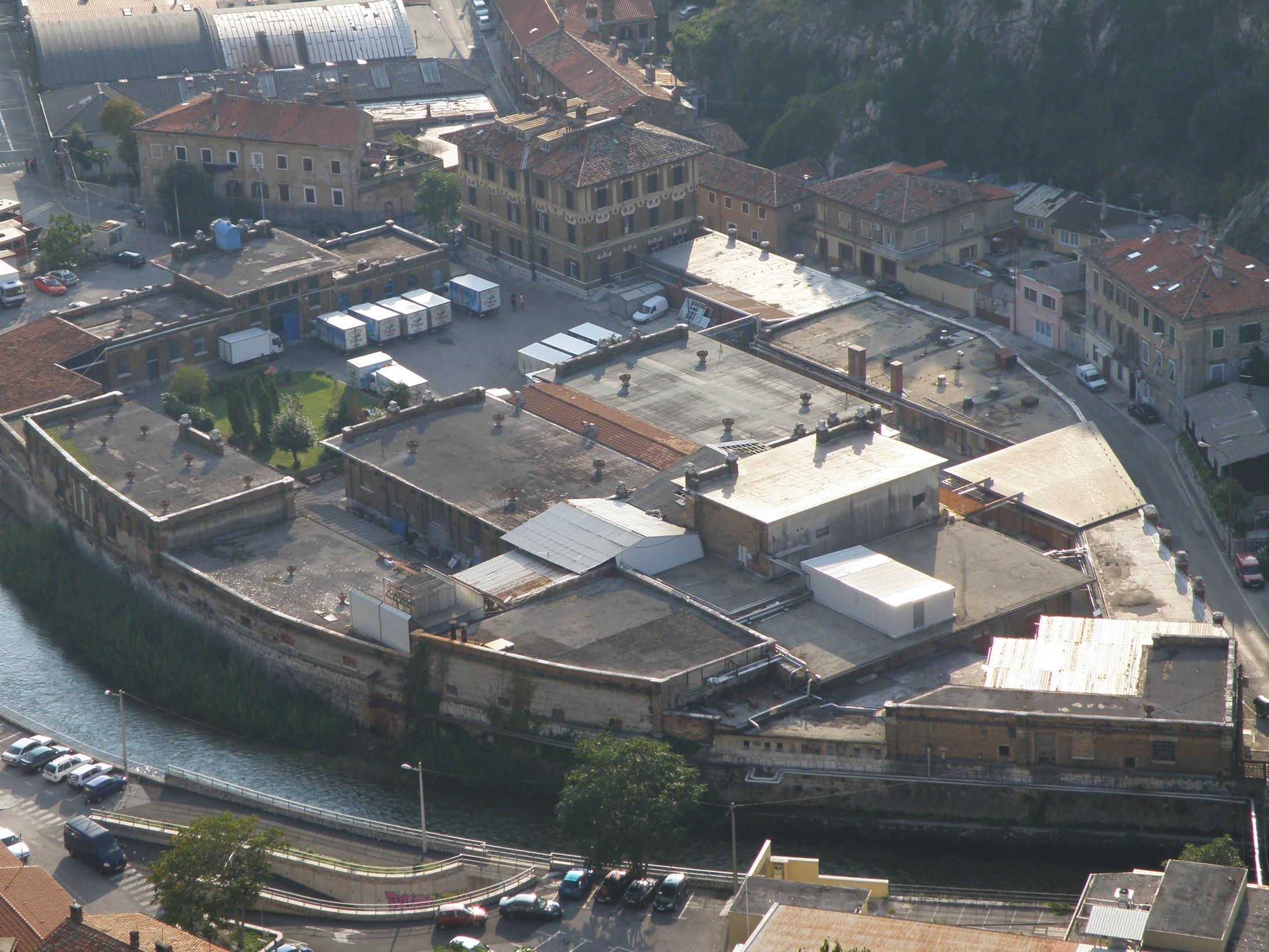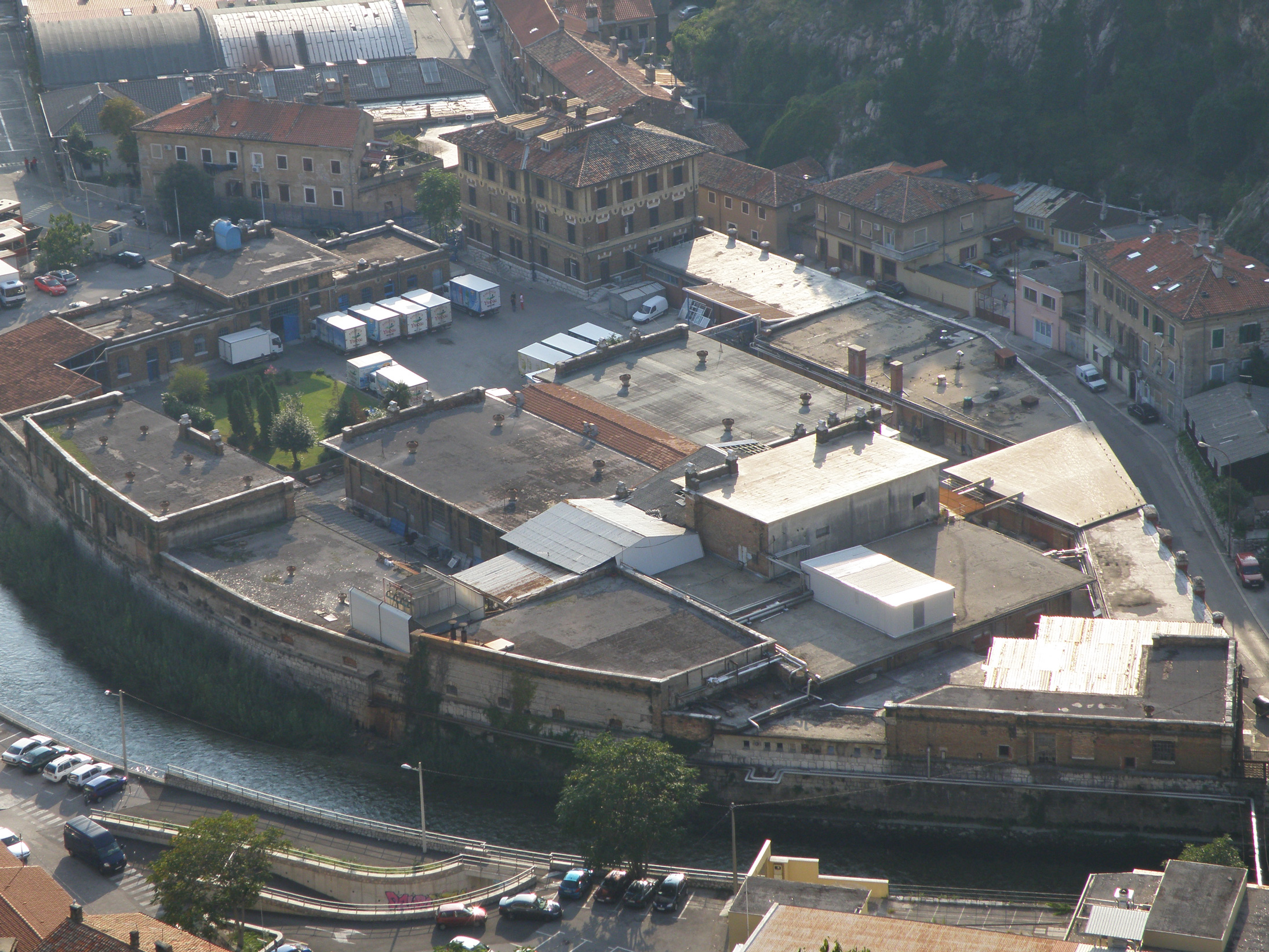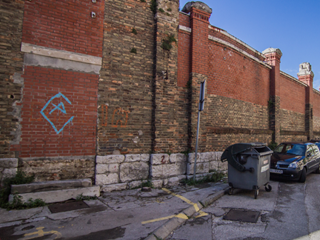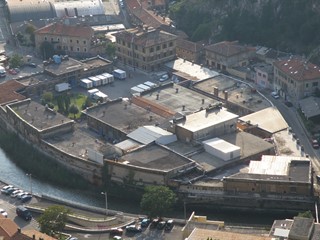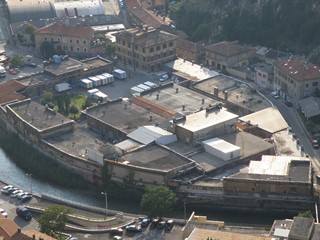The city slaughterhouse
address: Školjić Street 16Period: Secession/Art Noveau
Kind: Immovable material heritage
Century: 20
Year: 1907
Purpose: industrial
The city slaughterhouse was a communal facility of the utmost importance for the city. The amount of attention that this complex received during its construction proves its vital role. It is known that, in 1895, the city’s financial committee made an agreement to purchase the house and the surrounding estate of the Superina family, located in the area of today’s Vodovodna Street for the construction of the city slaughterhouse. All works were carried out by the Technical Office of the City of Rijeka. The first drafts of the preliminary design were made in 1901 and, in 1904, architect Carlo Pergoli completed the existing drafts and designed the façades of the buildings. Construction was completed in 1907 and, in the same year, the plant was put into operation. The coordinator of the construction of the slaughterhouse was Guido Lado, the construction supervisor was Ugo Clauti and, thanks to Carlo Pergoli and his design of the façades, the complex obtained a unique artistic mark. Giovanni Dorig was hired for carving and stone works, Natale Mohovich for works in wrought iron and architect Giovanni Rubinich for masonry. During the construction (1904/1905), Rubinich offered the Technical Office a new solution for the construction of roofs, floors and columns: the use of Monier reinforced concrete structures. This shows that Rijeka’s architects knew about current European trends in terms of new materials and reinforced concrete solutions.
The entrance building is aesthetically the most impressive part of the slaughterhouse complex. It is a longitudinal two-storey building with an accentuated, elevated, central avant-corps part containing an attica style clock. The side arms are symmetrically opened with round arched window openings. Above them extends a wreath highlighted with medallions containing a motif of an iron loop which, as a leitmotif, became the decorative element of the entire complex. Wrought iron was used for the decoration of the attic. Pergoli achieved unique Art Nouveau façade mouldings with very few decorative elements. The most impressive parts were achieved by using a variety of materials, in this case, brick, stone and wrought iron.
Other supporting facilities were built along the main operational building. Although they possess similar stylistic features, their prominent practical character makes them far less representative. The Technical Office of Rijeka was in charge of their construction. By 1908, operating and manufacturing halls, stables and cold stores were built according to its designs.
The slaughterhouse also had the first biochemical laboratory in former Yugoslavia, which is why testing of meat and animals for bacterial infection during the slaughter procedure became mandatory in Rijeka. The thermal energy produced in the nearby Waste Incinerator was used to run the engines of the slaughterhouse.
Today, the entire complex has another function. It has been preserved and it is now used for commercial purposes of the Vir 1898 meat company.
Valorization:The complex of the Slaughterhouse has been protected as a cultural good. It represents a beautiful example of secession architecture with industrial purpose. It has also been preserved until today in its representative form, and besides that, its purpose has not changed entirely, as it is still being used for the needs of meat industry.
Bibliography:
Golob, Ivana, Stara industrijska zona, Sušačka revija 77., godina XX, Klub Sušačana, Rijeka, 2012.
Golob, Ivana, Industrijska arhitektura na području od Školjića do Banskih vrata i njena zaštita danas, diplomski rad, Filozofski fakultet u Rijeci, Rijeka, 2010.
Hraba, Nina; Lubina, Melita; Oštrić, Dolores; Sabalić, Damir; Turato, Lada; Vodopivec, Ivor; Zrnčić, Anamarija, Konzervatorski elaborat za područje Vodovodne ulice u Rijeci, Broj elaborata 1952, Konzervatorski odjel u Rijeci, 2009., Inventarni broj 17.
Lozzi Barković, Julija, Secesija u arhitekturi Rijeke, Izdavački centar Rijeka, Rijeka, 2010.
Magaš, Olga, Komunalni objekti, u: Arhitektura secesije u Rijeci, Moderna galoerija Rijeka, 1997.
Magaš, Olga, Urbanizacija prostorne cjeline Školjić – Banska vrata, Vjesnik povijesnog arhiva Rijeka, Sušak, 1995.


